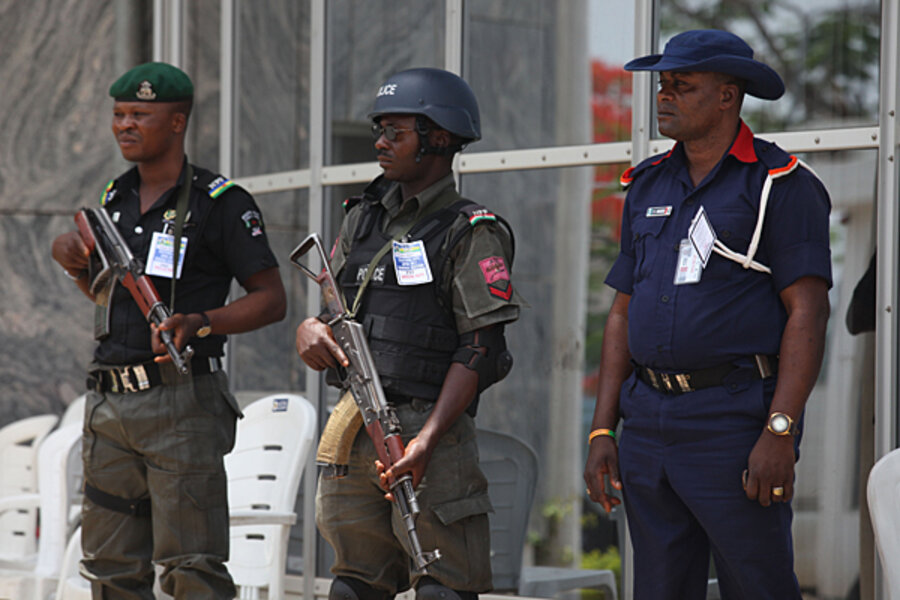Do protests in Nigeria, Uganda, and Burkina Faso have anything in common?
Loading...
Three African countries are experiencing major protests this week: Nigeria (specifically the northern part of the country), Uganda, and Burkina Faso. The three countries have vastly different political situations, but it’s worth exploring the differences and commonalities between these protest movements.
The differences stand out strongly. Nigeria is the most populous country in Africa (about 150 million people), with vast oil wealth and unpredictable politics. Its recently reelected President Goodluck Jonathan came to power only about a year ago, with the death of his predecessor. In northern Nigeria, the riots that began yesterday responded to long-held perceptions that Muhammadu Buhari, a three-time candidate with strong Northern support, has been cheated of his rightful victories. The announcement of Jonathan’s lead in the results tapped into resentments, differences, and divisions between northern and southern Nigeria that go back a century.
Uganda, a medium-sized nation (about 35 million people), is a regional military power with steady economic growth. Uganda has had substantial political continuity during the quarter-century reign of President Yoweri Museveni, who won a fourth term in February. Since then, the opposition-led “Walk to Work” protests arose because of high food prices and, indirectly, because of Mr. Museveni’s February win. “Walk to Work,” which began last week, continued yesterday. That protest resulted in the arrest of opposition leader Kizza Besigye, a move that may fuel further dissent.
Think you know Africa? Take our geography quiz.
Burkina Faso, meanwhile, is small (about 17 million people) and destitute. Its President Blaise Compaore – who has ruled nearly as long as Museveni – is a skillful and influential player in regional politics. Yet student protests over police brutality, a soldiers’ mutiny over unpaid wages, and a merchants’ demonstration over soldiers’ looting have thrown the country into unrest.
With different motivations driving the protests, we can’t say they all form one coherent movement. Nor can we say – although many sub-Saharan Africans are aware of the Arab protest movement – that the protests in northern Nigeria and Burkina Faso are directly inspired by the Arab revolutions. The case of Uganda is slightly different in that Ugandan opposition leaders have referenced the Arab protests, but even in Uganda the primary drivers of unrest seem local.
Finally, the responses of leaders have differed. Jonathan has appealed for calm but Nigerian police have also attempted to quell the riots by force. Museveni has cracked down. And Compaore has reorganized his government while attempting to regain the political upper hand.
Still, despite the differences, it’s worth thinking about commonalities. One is economic frustration. From northern Nigeria’s underdevelopment in comparison to the south of the country, to the burden of high prices in Uganda, to the soldiers’ empty pockets in Burkina Faso, economic unease is creating popular anger at political elites.
Another commonality is political frustration, specifically electoral frustration: Nigeria, Uganda, and Burkina Faso have all held elections since November, and in each case the incumbent won reelection. Jonathan, Museveni, and Compaore all have significant popular support, but their victories have also left large groups of voters feeling marginalized.
A third commonality is the role of security forces – in each case, there has been some degree of repression. This repression has, in the eyes of many northern Nigerian rioters, Ugandan protesters, and Burkinabe mutineers, further delegitimized the central government.
These protest movements are likely to go in different directions. The only government that I think has a serious chance of falling is Compaore’s, and he may well outlast this uprising. But all of the protests are, as Michael Ralph reminds us, worth paying attention to. Local movements, however different their origins and trajectories, are offering us insight into problems that many groups in sub-Saharan Africa are experiencing, and protesting.
--- Alex Thurston blogs about politics and security issues across Africa's Sahel region at Sahel Blog.





